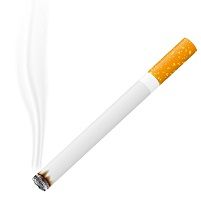Article
Smoking Impairs the Effectiveness of Inhaled Corticosteroids
Author(s):
After 6 months of treatment with inhaled budesonide, 800 μg daily, bronchial hyperresponsiveness was greater and the proportion of eosinophils in induced sputum and improvement in lung function were lower in smokers than in nonsmokers with asthma.

Cigarette smoking induces neutrophilic airway inflammation and resistance to treatment with inhaled corticosteroids (ICS). To clarify the effects of cigarette smoking on the airways of asthma patients and to compare the effect of ICS in smoking patients with those in nonsmoking patients, researchers from Fukuoka National Hospital, Fukuoka, Japan, studied 81 smokers and 52 nonsmokers with mild to moderate asthma and compared them with 34 healthy volunteers. The researchers published the results of their study in the July/August, 2016, issue of Allergy and Asthma Proceedings.
The researchers measured fractional exhaled nitric oxide (FeNO) concentration, lung function, and the proportions of eosinophils and neutrophils in induced sputum in all study subjects. As a result, they found that, compared with asthmatic nonsmokers, asthmatic smokers had a lower FeNO concentration (P < 0.01) as well as a lower ratio of forced expiratory volume in 1 second to forced volume capacity (FEV1:FVC) (P < 0.05). Asthmatic smokers also had a lower proportion of eosinophils (P < 0.05) and a higher proportion of neutrophils (P < 0.05) in induced sputum than asthmatic nonsmokers did.
However, in comparison to control subjects, both asthmatic smokers and asthmatic nonsmokers had significantly more prominent airway obstruction, a higher FeNO concentration, and a higher percentage of eosinophils in sputum, and these differences were statistically significant.
The investigators also assessed bronchial hyperresponsiveness by measuring the concentration of acetylcholine that resulted in a 20% decrease in FEV1. As a result, they found that bronchial hyperresponsiveness was greater in asthmatic smokers than in asthmatic nonsmokers (P < 0.05).
They also found that, after 6 months of treatment with inhaled budesonide, 800 μg daily, bronchial hyperresponsiveness was greater and the proportion of eosinophils in induced sputum and improvement in lung function were lower in asthmatic smokers than in asthmatic nonsmokers (P < 0.05).
As a result, the Japanese researchers concluded that asthmatic smokers showed neutrophilic as well as eosinophilic airway inflammation. In addition, they concluded that cigarette smoking reduced the efficacy of ICS treatment. They interpreted their findings as having important implications for the management of patients with asthma who smoke cigarettes.
Related Coverage:
Once-Daily Tiotropium Found to be Safe and Tolerable in Combination with Inhaled Corticosteroids
Weight Gain Worsens Asthma Control, According to Study
Imaging Study Finds Systolic Dysfunction, but no Diastolic Dysfunction, in Children with Asthma




